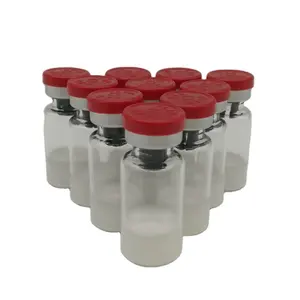Phổ biến trong ngành của bạn

Yếm Nha Khoa Dùng Một Lần 3 Lớp Màu Đen Trắng Y Tế Logo Tùy Chỉnh Đầy Màu Sắc Dùng Một Lần Để Xăm Nha Khoa
1,55 US$ - 2,13 US$
Đơn hàng tối thiểu: 400 Túi


Nồi hấp dùng một lần tự niêm phong túi tiệt trùng cho dụng cụ nha khoa
0,008 US$ - 0,10 US$
Đơn hàng tối thiểu: 2000 Cái


TA021-3 Zogear Tiệt Trùng 5 Pcs Bộ Dụng Cụ Nha Khoa Dùng Một Lần/Nhà Sản Xuất Thiết Bị Dùng Một Lần
0,16 US$ - 0,28 US$
Đơn hàng tối thiểu: 1000 Bộ


Yếm Nha Khoa Chuyên Nghiệp Yếm Nha Khoa Dùng Một Lần Màu Hồng Cho Nhà Sản Xuất Khăn Giấy Bệnh Nhân
0,012 US$ - 0,0299 US$
Đơn hàng tối thiểu: 10000 Cái


125PCS dùng một lần nha khoa Poly BIB bệnh nhân khăn giấy 3 lớp/răng nha khoa Bib
5,30 US$ - 5,90 US$
Đơn hàng tối thiểu: 10 Hộp các tông
Vận chuyển mỗi chiếc: 4,57 US$


Nha khoa Dùng Một Lần Dụng Cụ phẫu thuật Khay với Chia
0,10 US$ - 1,00 US$
Đơn hàng tối thiểu: 1000 Cái

Thận Khay Dụng Cụ Y Tế Thận Hình Cong Thép Không Gỉ Khay Sử Dụng Cho Phòng Thí Nghiệm Phẫu Thuật Nha Khoa Cụ Thận Khay
2,00 US$ - 4,00 US$
Đơn hàng tối thiểu: 250 Cái

Dụng Cụ Phẫu Thuật Ấn Tượng Khay Dùng Một Lần Điều Chỉnh Nha Khoa Ấn Tượng Khay
1,00 US$ - 2,00 US$
Đơn hàng tối thiểu: 500 Hộp


Khay Giấy Nha Khoa Dùng Một Lần Có Sẵn 6 Màu
6,00 US$ - 10,00 US$
Đơn hàng tối thiểu: 100 Hộp các tông

Chất Lượng Cao Dùng Một Lần Nha Khoa Fluoride Bọt Khay Nha Khoa Phẫu Thuật Ấn Tượng Khay
2,45 US$ - 2,85 US$
Đơn hàng tối thiểu: 50 Túi

Khay Nhựa Dùng Một Lần Cho Phẫu Thuật Y Tế, Chậu Hình Thận, Khay Phẫu Thuật Không Vô Trùng Dùng Một Lần
0,20 US$ - 0,60 US$
Đơn hàng tối thiểu: 100 Đơn vị
Các tìm kiếm liên quan:
khay phẫu thuật dùng một lầnkhay nha khoa dùng một lầnkhay phẫu thuật có nắp đậykhay y tế dùng một lầngiá khay phẫu thuậtkhay phẫu thuật tùy chỉnhkhay vi phẫu thuậtkhay lâm sàng dùng một lầnnắp khay dùng một lần nha khoakhay phẫu thuậtkhay dùng một lần cho bệnh việndụng cụ nhựa khay nha khoakhay đen cho y tếkhay dùng một lần trong y tếkhay phục vụ y tế

Khay Ấn Tượng Nha Khoa Dùng Một Lần Bán Sỉ Linh Vật Khay Răng Nha Khoa Bằng Nhựa
0,30 US$ - 0,45 US$
Đơn hàng tối thiểu: 1 Hộp

Khay phẫu thuật nha khoa khay Chất lượng cao chuyên nghiệp sử dụng bác sĩ sử dụng khay
2,20 US$ - 2,50 US$
Đơn hàng tối thiểu: 10 Cái

Chuyên Nghiệp Đa-Mục Đích Thép Không Gỉ Dùng Một Lần Thận Hình Khay Khử Trùng Dụng Cụ Phẫu Thuật Bát Thận Khay
0,69 US$ - 0,99 US$
Đơn hàng tối thiểu: 5 Cái

Xuất Khẩu Đáng Tin Cậy Chất Lượng Hàng Đầu Khay Phẫu Thuật Nhựa Dùng Một Lần Để Sử Dụng Bệnh Viện Với Giá Thấp
0,30 US$ - 0,50 US$
Đơn hàng tối thiểu: 10000 Đơn vị

Nha khoa thép không gỉ ấn tượng khay/dụng cụ nha khoa ấn tượng khay dùng một lần ấn tượng khay
15,99 US$ - 17,99 US$
Đơn hàng tối thiểu: 20 Cái

Khay phẫu thuật nha khoa khay Chất lượng cao chuyên nghiệp điều trị Khay thép không gỉ Dụng cụ phẫu thuật
3,50 US$ - 4,00 US$
Đơn hàng tối thiểu: 20 Cái


Holloware Nha khoa Y tế phòng 9 "x 5" x 2 "Bệnh Viện Phẫu Thuật dụng cụ thay đồ khay với nắp
12,00 US$ - 14,00 US$
Đơn hàng tối thiểu: 20 Khay

Chất lượng tốt nhất thép không gỉ thận khay đặt giá tốt nhất dụng Cụ Phẫu Thuật bán buôn dụng cụ dùng một lần thận khay
3,50 US$ - 5,50 US$
Đơn hàng tối thiểu: 50 Cái

Khay surgicaltray phẫu thuật nha khoa khay Chất lượng cao chuyên nghiệp điều trị Khay thép không gỉ Dụng cụ phẫu thuật cao Quali
4,99 US$ - 5,99 US$
Đơn hàng tối thiểu: 20 Cái

Dụng cụ nha khoa Scaler Khay cho curettes, Explorers, gương, đầu dò, thiết lập các công cụ phẫu thuật phòng thí nghiệm Khay thép không gỉ
1,15 US$ - 2,50 US$
Đơn hàng tối thiểu: 25 Cái

Khay phẫu thuật nha khoa khay Chất lượng cao chuyên nghiệp sử dụng bác sĩ sử dụng khay
2,60 US$ - 3,50 US$
Đơn hàng tối thiểu: 20 Cái

Chất lượng cao 6 miếng nhựa nha khoa thermoform dùng một lần ấn tượng khay đục lỗ các loại
6,00 US$ - 14,00 US$
Đơn hàng tối thiểu: 10 Cái

Khử trùng Cassette giá dây lưới khay với nắp cho phẫu thuật dụng cụ nha khoa khay khử trùng
15,00 US$ - 20,00 US$
Đơn hàng tối thiểu: 1 Cái

Bán Buôn Bệnh Viện Y Tế Gói 3 Khay Y Tế Phẫu Thuật Tấm Thép Không Gỉ Y Tế Sinh Viên Khay
0,11 US$ - 0,30 US$
Đơn hàng tối thiểu: 10 Cái


Thép không gỉ hoạt động phẫu thuật Công cụ KT surgico thận khay Hollow Ware dụng cụ phẫu thuật thiết bị khay
2,50 US$ - 3,50 US$
Đơn hàng tối thiểu: 50 Đơn vị

Bộ Dụng Cụ Phẫu Thuật Rỗng Wars Làm Bằng Thép Không Gỉ Chất Lượng Cao Khay Tốt Nhất
23,00 US$ - 39,00 US$
Đơn hàng tối thiểu: 2 Cái

Nhà sản xuất dụng cụ nha khoa phòng thí nghiệm phẫu thuật khay thận lưu vực bền thận hình emesis lưu vực
0,09 US$ - 0,30 US$
Đơn hàng tối thiểu: 10000 Cái

Khay Y Tế Y Tế Bằng Thép Không Gỉ 304 Khay Dụng Cụ Phẫu Thuật Khay Dụng Cụ Nha Khoa Hình Vuông Y Tế
11,00 US$ - 14,00 US$
Đơn hàng tối thiểu: 50 Cái

Hollow Ware phẫu thuật và dụng cụ nha khoa scalers Khay thép không gỉ 2974 mahersi
0,50 US$ - 2,50 US$
Đơn hàng tối thiểu: 10 Cái

10 cái thép không gỉ nha khoa ấn tượng khay trên thấp hơn Răng Chủ nha khoa ấn tượng xô nha khoa nha khoa công cụ
1,49 US$ - 1,99 US$
Đơn hàng tối thiểu: 20 Cái

SJ Khay Dụng Cụ Phẫu Thuật Dụng Cụ Phòng Thí Nghiệm Nha Sĩ Bằng Nhựa Có Thể Tự Hấp Khay Phẳng Nhựa Nha Khoa Chăm Sóc Răng Miệng Nhiều Màu
2,24 US$ - 2,69 US$
Đơn hàng tối thiểu: 1000 Cái

Thép không gỉ thận phòng thí nghiệm món ăn phẫu thuật Bát bệnh viện dụng cụ phẫu thuật Khay nha khoa bệnh viện phòng khám
2,50 US$ - 4,10 US$
Đơn hàng tối thiểu: 20 Cái

Đa mục đích thép không gỉ thận hình Khay ba Kích thước dụng cụ y tế thận hình khay
6,99 US$ - 9,99 US$
Đơn hàng tối thiểu: 20 Bộ

Khử trùng khử trùng hộp Medic xử lý nhôm container thiết bị y tế khay khử trùng
9,00 US$ - 10,00 US$
Đơn hàng tối thiểu: 1 Cái

Các danh mục hàng đầu
Giới thiệu về khay phẫu thuật nha khoa dùng một lần
Mua nhiều loại khay phẫu thuật nha khoa dùng một lần. trên cửa hàng trực tuyến hàng đầu, Alibaba.com. Những sản phẩm bổ dưỡng mạnh mẽ này rất lý tưởng để sử dụng trong tất cả các mùa. Những khay phẫu thuật nha khoa dùng một lần chất lượng cao. có thể áp dụng rộng rãi và thích hợp cho việc sử dụng trong nhà và ngoài trời.
Các chất dinh dưỡng trong những khay phẫu thuật nha khoa dùng một lần nổi bật này. hỗ trợ cải thiện chất lượng đất; do đó khả năng giữ nước tăng lên. Những sản phẩm này rất giàu hóa chất, giúp vi khuẩn phát triển mạnh; do đó, cây trồng có thể tiếp cận các chất dinh dưỡng cần thiết cho sự phát triển. Tương tự như vậy, những sản phẩm tốt cho sức khỏe này được làm từ các thành phần thân thiện với môi trường để thúc đẩy đa dạng sinh học của các loài bằng cách ngăn ngừa ô nhiễm môi trường.
Khi nói đến tính bền vững, không đâu xa hơn những sản phẩm cao cấp này từ Alibaba.com. Những khay phẫu thuật nha khoa dùng một lần có thể dự đoán được. có thể được tùy chỉnh để phù hợp với đất của cây trồng, do đó tạo ra các bãi trồng hoàn hảo. Các sản phẩm đáng tin cậy và hoạt động nhanh trên cây trồng; do đó, chúng có thể được sử dụng trên đất nghèo dinh dưỡng mà vẫn thu được sản lượng lớn. Những sản phẩm đích thực này rất dễ sử dụng và áp dụng cho tất cả các loại cây trồng trong nhà và ngoài trời. Các kích thích tố tạo rễ trong các sản phẩm này hoạt động tích cực và sôi động, do đó thúc đẩy sự phát triển hoàn hảo ở thực vật. Các sản phẩm chứa các thành phần tự nhiên giúp cây trồng và cây trồng nuôi dưỡng bên trên và bên dưới đất.
Alibaba.com cung cấp rất nhiều sản phẩm tuyệt vời khay phẫu thuật nha khoa dùng một lần. tùy chọn cho các khách hàng khác nhau của họ. Các nhà sản xuất và nhà cung cấp được chứng nhận cung cấp các sản phẩm cập nhật đang hot trên thị trường hiện nay. Những sản phẩm này được sản xuất cho những người làm vườn và nông dân, những người tự hào về việc sản xuất ra năng suất chất lượng cao.
Các chất dinh dưỡng trong những khay phẫu thuật nha khoa dùng một lần nổi bật này. hỗ trợ cải thiện chất lượng đất; do đó khả năng giữ nước tăng lên. Những sản phẩm này rất giàu hóa chất, giúp vi khuẩn phát triển mạnh; do đó, cây trồng có thể tiếp cận các chất dinh dưỡng cần thiết cho sự phát triển. Tương tự như vậy, những sản phẩm tốt cho sức khỏe này được làm từ các thành phần thân thiện với môi trường để thúc đẩy đa dạng sinh học của các loài bằng cách ngăn ngừa ô nhiễm môi trường.
Khi nói đến tính bền vững, không đâu xa hơn những sản phẩm cao cấp này từ Alibaba.com. Những khay phẫu thuật nha khoa dùng một lần có thể dự đoán được. có thể được tùy chỉnh để phù hợp với đất của cây trồng, do đó tạo ra các bãi trồng hoàn hảo. Các sản phẩm đáng tin cậy và hoạt động nhanh trên cây trồng; do đó, chúng có thể được sử dụng trên đất nghèo dinh dưỡng mà vẫn thu được sản lượng lớn. Những sản phẩm đích thực này rất dễ sử dụng và áp dụng cho tất cả các loại cây trồng trong nhà và ngoài trời. Các kích thích tố tạo rễ trong các sản phẩm này hoạt động tích cực và sôi động, do đó thúc đẩy sự phát triển hoàn hảo ở thực vật. Các sản phẩm chứa các thành phần tự nhiên giúp cây trồng và cây trồng nuôi dưỡng bên trên và bên dưới đất.
Alibaba.com cung cấp rất nhiều sản phẩm tuyệt vời khay phẫu thuật nha khoa dùng một lần. tùy chọn cho các khách hàng khác nhau của họ. Các nhà sản xuất và nhà cung cấp được chứng nhận cung cấp các sản phẩm cập nhật đang hot trên thị trường hiện nay. Những sản phẩm này được sản xuất cho những người làm vườn và nông dân, những người tự hào về việc sản xuất ra năng suất chất lượng cao.






















